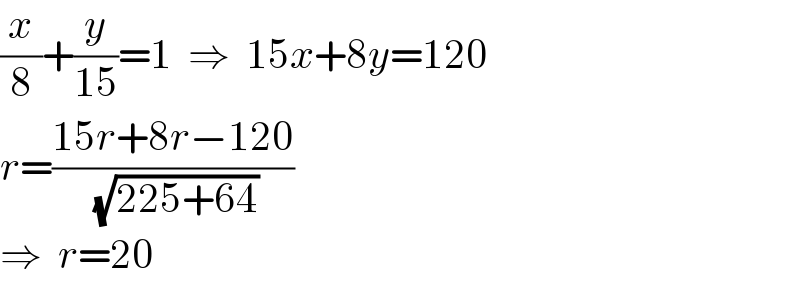
Question and Answers Forum
Question Number 163556 by Ari last updated on 07/Jan/22

Answered by ajfour last updated on 07/Jan/22

Answered by mr W last updated on 07/Jan/22

Commented by mr W last updated on 07/Jan/22

Commented by Tawa11 last updated on 08/Jan/22

